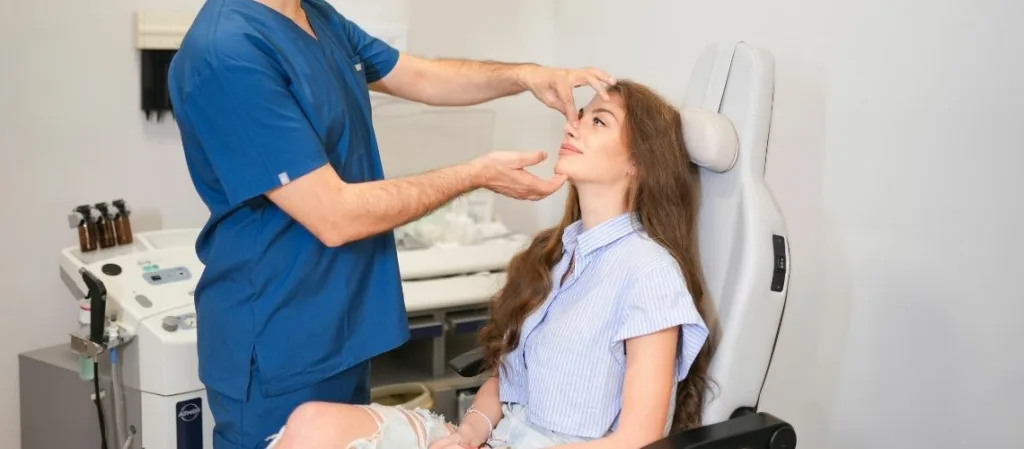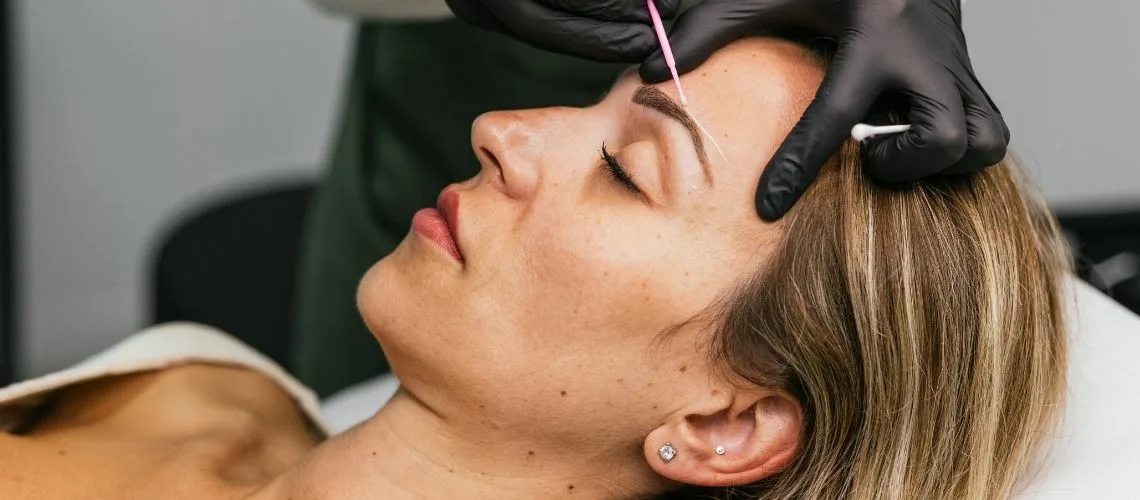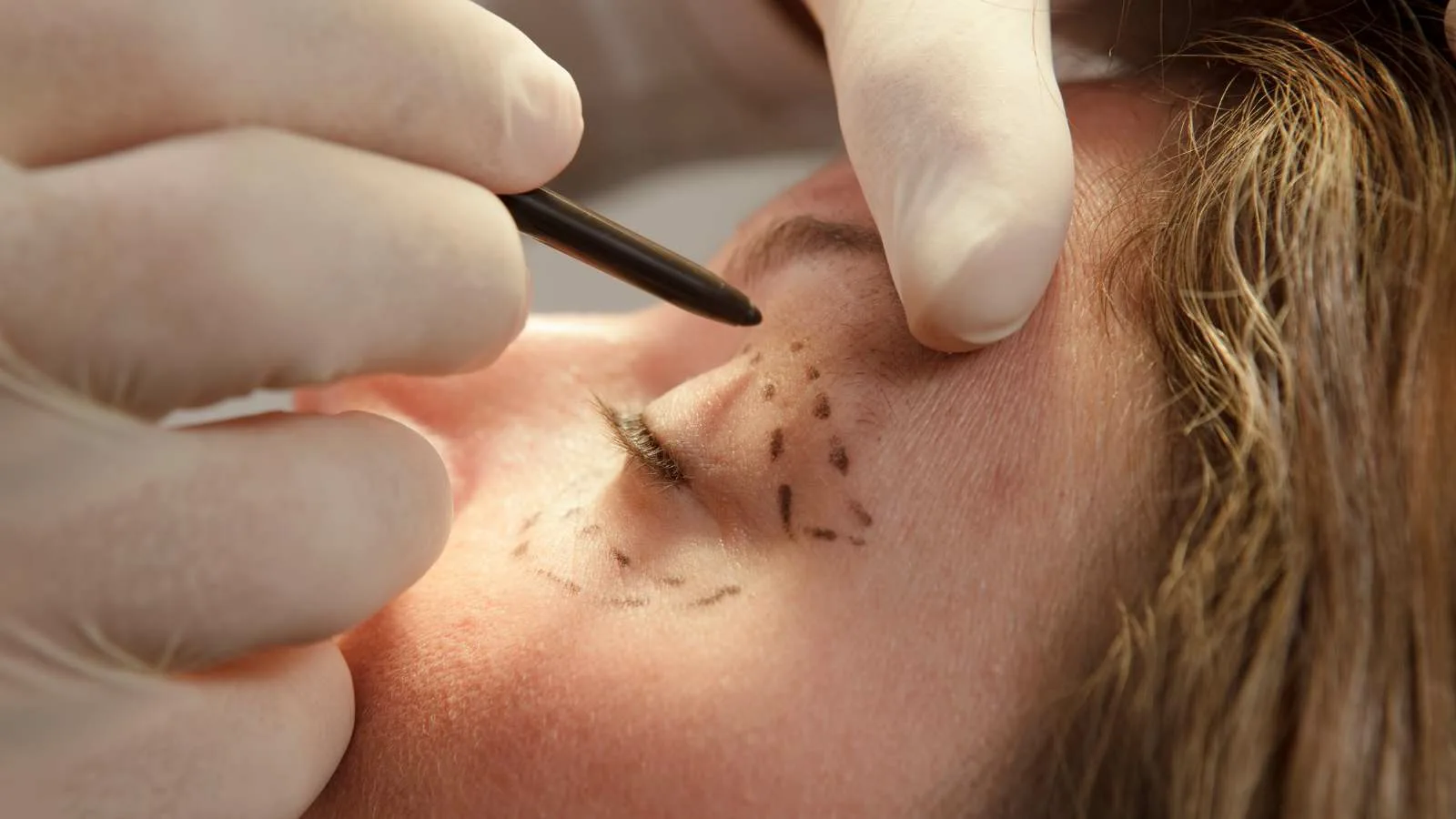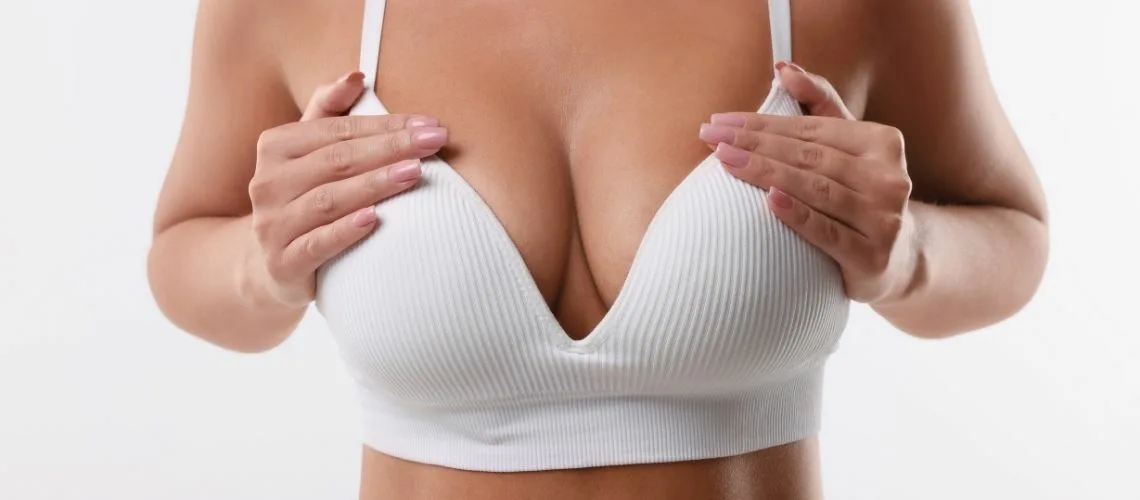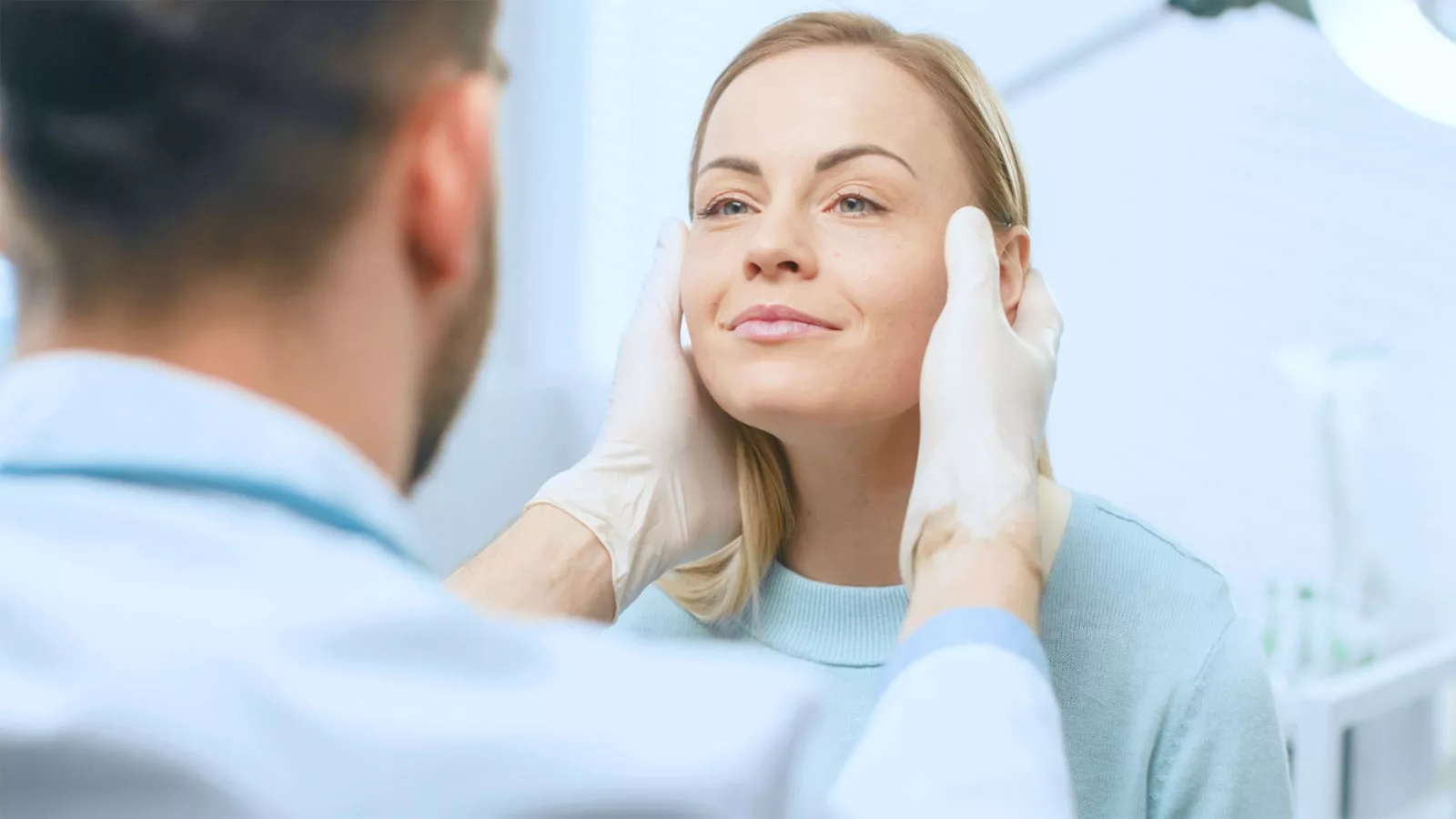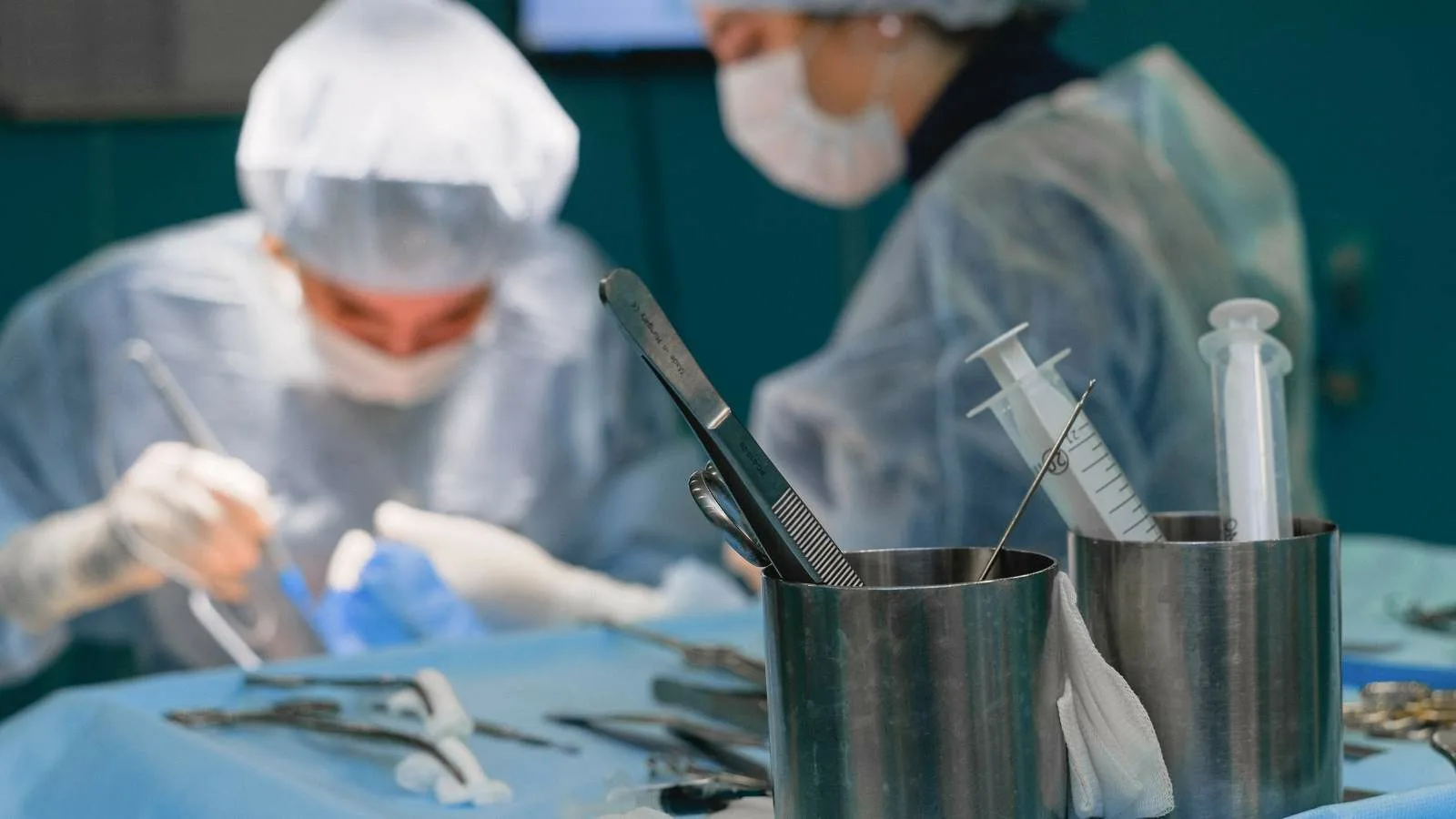The recovery process after rhinoplasty begins with controlled swelling and bruising that gradually subside within weeks. Patients should follow medical instructions carefully to ensure proper healing and achieve the desired aesthetic and functional results.
Postoperative care after rhinoplasty includes head elevation, cold compresses, and avoiding physical strain. These measures help reduce edema and accelerate the healing process, improving patient comfort and surgical outcomes.
Nasal splints and dressings are typically removed within the first week. During this period, avoiding nose blowing and excessive facial movement is essential to protect delicate internal structures and maintain surgical corrections.
Long-term recovery requires patience, as final results may take up to one year. Subtle refinements in nasal shape occur gradually, while regular follow-up appointments help monitor healing and address any complications early.
What Does the Post-Rhinoplasty Recovery Timeline Look Like?
Rhinoplasty recovery is a multi-stage process that varies from person to person. Although the first visible healing takes weeks, substantial swelling reduction can take months, and your nose may take a full year—or even longer—to reach its final form. Knowing this timeline helps you manage expectations.
What Happens in the First Week (Days 1-7)?
Dedicate this first week entirely to rest. At first you may feel mild discomfort plus visible swelling and bruising. A cast or plastic splint will protect the outside of your nose. Tampons or soft silicone splints placed in the nostrils may prevent bleeding or adhesions. Keeping your head elevated—for example, sleeping on several pillows—is the golden rule for easing swelling and bruising. Typically, the cast and any external sutures are removed at the end of the first week.
How Does the Early Recovery Phase (Weeks 1-3) Go?
The most obvious bruising and swelling around the eyes and face rapidly diminish in this period. You’ll start to feel more energetic, and most people can return to work or social life. You may still sense some nasal congestion—this is perfectly normal. With your doctor’s approval, gentle walks usually feel good during this stage.
What Happens in the Mid-Recovery Phase (Months 1-3)?
Swelling continues to decline. By the end of month 3, roughly 80–90 percent of swelling and edema have resolved, and your new nasal shape is more defined. The tip may still feel slightly swollen or firm, and sensation may not be fully restored. You can usually get clearance for more vigorous exercise, such as jogging, in this time frame.
When Does Late Recovery and Final Shaping (Month 3–Year 1 +) Finish?
In this last stage your nose reaches its final shape. Any residual, subtle swelling—especially at the tip—fades slowly, and every contour becomes clear. This phase generally takes at least a full year. If you have thick skin or have had previous nasal surgery (revision), it can take longer. If the operation also corrected breathing problems, most people notice easier breathing within the first 3–6 months.
How Long Do Swelling and Bruising Last, and How Can They Be Reduced?
Post-operative swelling and especially under-eye bruising are entirely normal. They usually peak in the first 2–3 days and then diminish gradually. Most bruising is gone within 1–2 weeks.
Swelling lasts longer. Although the pronounced swelling of the first weeks recedes quickly, mild swelling and firmness at the nasal tip can persist for 6 months to a year—or longer. A slight day-to-day increase, especially in the morning or when you’re tired, is normal. By about month 3, you’ll notice nearly 90 percent of the swelling has subsided.
What can you do to reduce swelling, edema, and bruising? Keep these points in mind:
- Keep Your Head Elevated: One of the most important steps in recovery. While sleeping or resting, support your head with several pillows (about a 30–45-degree angle) so it stays above heart level, reducing swelling and seepage.
- Apply Cold Compresses: During the first 48–72 hours, place cold compresses on your cheeks and under-eye areas (not directly on the nose) to control swelling and bruising. Use ice packs or gel packs wrapped in a clean cloth. Several times a day for 10–15 minutes each is enough.
- Limit Activities: Avoid strenuous exercise and movements that raise blood pressure for as long as your doctor advises; this prevents additional swelling. Start sports again slowly.
- Watch Your Diet: Reducing salt (sodium) intake helps your body retain less water and thus decreases swelling faster. A good diet supports healing. Avoid very spicy foods and alcohol for a while, as advised.
- Avoid Heat: Very hot showers, steam baths, or saunas dilate vessels and may worsen swelling. Lukewarm showers are better in the first weeks.
Is There Pain After Rhinoplasty, and How Is It Controlled?
Contrary to common fears, post-rhinoplasty pain is usually not severe. Most people describe mild soreness, a feeling of fullness, or a light headache. Local anesthetics used during surgery and prescribed pain relievers easily control this.
Pain peaks in the first few days and largely subsides—or disappears—within a week. Your doctor will prescribe suitable medication.
Important Note: Unless your doctor specifically approves it, avoid aspirin and ibuprofen (NSAIDs) for about two weeks before and after surgery, as these thin the blood and increase bleeding and bruising risks.
Drug-free tactics help too: cold compresses both numb the area and reduce swelling; adequate rest and keeping your head elevated also improve comfort.
What Awaits Immediately After Surgery?
The earliest stage of healing begins once you wake up and reach your room. In the first hours and days you can expect:
- Cast/Splint and Tampons/Splints: A mold or cast will protect and support your nose externally, usually for one week. Internally, tampons or silicone splints may control bleeding or prevent adhesions. Your surgeon decides when these are removed (often within 1–7 days).
- Nasal Congestion: Swelling inside and any tampons cause a blocked feeling. You may need to breathe through your mouth temporarily; this is normal.
- Facial Swelling: The nose, cheeks, and eye area become notably swollen—particularly in the first 24–48 hours. This is entirely normal.
- Light Oozing: For a few days a small amount of bloody or pinkish fluid may drip. A small gauze drip pad can be placed beneath the nose.
- Rest: Begin resting right away and keep your head elevated constantly. A friend or family member to help during the first 1–2 days is very useful.
Which Activities Should I Avoid During Recovery?
Smooth recovery requires avoiding certain activities for a while:
- Strenuous Exercise: Heavy activities that raise blood pressure—such as running or weight-lifting—are usually off limits for 2–6 weeks because they increase bleeding risk and prolong swelling.
- Contact Sports and Impact Risk: Healing bone and cartilage are delicate. Avoid sports where your nose could be hit (football, basketball, etc.) for at least two months—or longer.
- Nose Blowing: Do not blow your nose for the first week—or as long as your doctor advises. If you must sneeze, keep your mouth open.
- Glasses: Regular or sunglasses press on the nasal bridge. Usually you must keep glasses off the bridge for 4 weeks to 2 months. Use lenses or other alternatives.
- Exaggerated Facial Expressions: Avoid excessive laughing or facial movements, especially in the first week.
- Bending Forward: Don’t keep your head down for long periods—it increases swelling and discomfort.
- Swimming: Because of infection risk, do not swim until your doctor says it’s safe—often several weeks.
- Tight Clothing: Choose front-opening clothes in the first weeks to avoid bumping your nose.
- Sexual Activity: This can raise heart rate and blood pressure. For the first few weeks, be gentle and protect your nose from impact; discuss the timing openly with your doctor.
- Driving: Do not drive if you’re taking narcotic pain medication.
How Should Incision and Wound Care Be Done?
Proper incision care prevents infections and helps scars heal well:
- Cleaning: Keep incision sites clean exactly as instructed (specific solutions, antibiotic ointment, etc.). Be gentle while washing your face. Saline sprays may keep the nose interior moist. Mild itching is a sign of healing—don’t scratch.
- Sutures: In closed technique, stitches are inside and dissolve. In open technique, the small columellar sutures are removed after 5–10 days.
- Dressings and Tapes: After the cast is removed, your doctor may tape your nose to control swelling. Follow instructions for tape care.
- Scar Management: To keep the open-technique scar barely noticeable, protect it from sun for at least 6–12 months (high-SPF sunscreen, hat). Your doctor may recommend scar creams over time.
- Infection Monitoring: If you see increased redness, warmth, persistent swelling, purulent discharge, foul odor, or fever, contact your doctor immediately.
What Should Nutrition and Lifestyle Be Like During Recovery?
Your overall health and habits influence healing speed. Here are some tips:
- Diet: Balanced, nutritious eating is vital. In the first week, soft foods may be easier. High-fiber foods prevent constipation (straining puts pressure on the nose). Avoid very salty and spicy foods to help reduce swelling.
- Fluid Intake: Drink plenty of water and healthy fluids.
- Smoking: Absolutely critical—stop smoking at least 4–6 weeks before and after surgery. Smoking seriously impairs healing and raises infection risk.
- Alcohol: Avoid alcohol—especially while on painkillers. It also increases swelling and edema; stay away during the first weeks.
- Medications and Supplements: Don’t take blood-thinning drugs or certain herbal supplements without your doctor’s approval.
- Rest: Adequate sleep is essential for bodily repair.
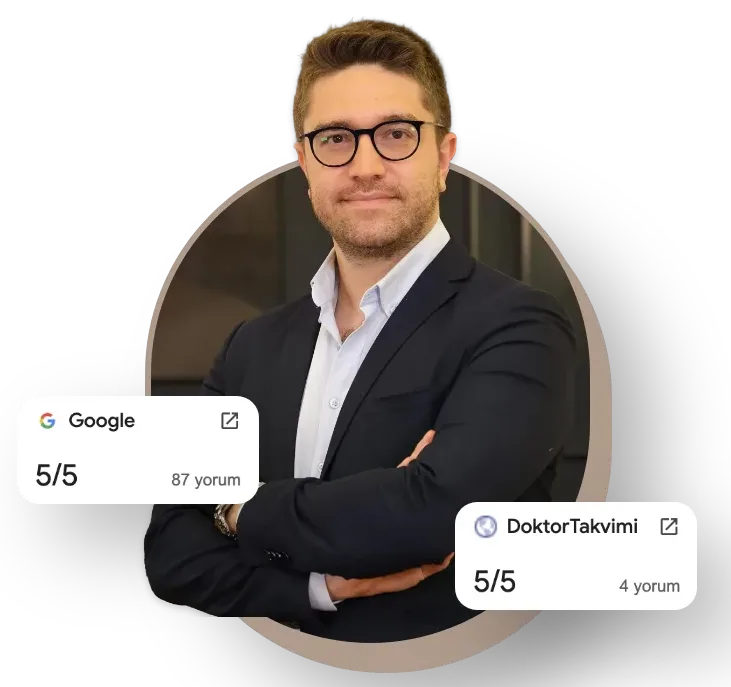
Op. Dr. Erman Ak is an internationally experienced specialist known for facial, breast, and body contouring surgeries in the field of aesthetic surgery. With his natural result–oriented surgical philosophy, modern techniques, and artistic vision, he is among the leading names in aesthetic surgery in Türkiye. A graduate of Hacettepe University Faculty of Medicine, Dr. Ak completed his residency at the Istanbul University Çapa Faculty of Medicine, Department of Plastic, Reconstructive and Aesthetic Surgery.
During his training, he received advanced microsurgery education from Prof. Dr. Fu Chan Wei at the Taiwan Chang Gung Memorial Hospital and was awarded the European Aesthetic Plastic Surgery Qualification by the European Board of Plastic Surgery (EBOPRAS). He also conducted advanced studies on facial and breast aesthetics as an ISAPS fellow at the Villa Bella Clinic (Italy) with Prof. Dr. Giovanni and Chiara Botti.
Op. Dr. Erman Ak approaches aesthetic surgery as a personalized art, tailoring each patient’s treatment according to facial proportions, skin structure, and natural aesthetic harmony. His expertise includes deep-plane face and neck lift, lip lift, buccal fat removal (bichectomy), breast augmentation and lifting, abdominoplasty, liposuction, BBL, and mommy makeover. He currently provides safe, natural, and holistic aesthetic treatments using modern techniques in his private clinic in Istanbul.

